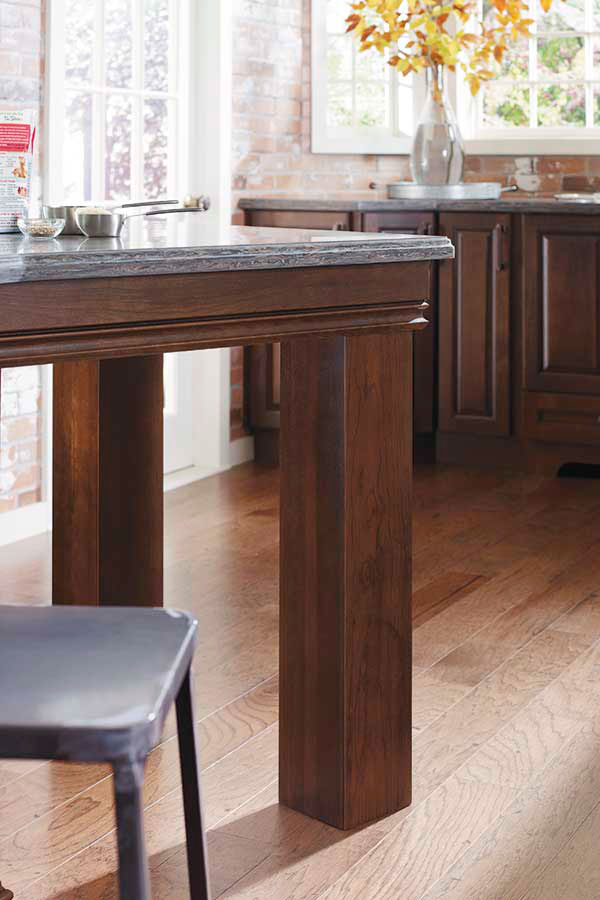An Overview to Picking the Perfect Legs For Cooking Area Island for Your Home
Choosing the suitable legs for your kitchen area island is a nuanced choice that influences both the performance and visual appeal of this main area. Factors such as elevation, materials, and style play a vital role in balancing your island with the total kitchen area layout. Furthermore, recognizing the relevance of stability and maintenance can substantially affect your option. As you think about these components, it ends up being apparent that the appropriate legs can transform not just the look of your kitchen however also its use for years ahead. What particular attributes should you prioritize in this option process?

Understanding Kitchen Area Island Legs
When selecting legs for a kitchen area island, it's vital to understand their useful and aesthetic functions in the total layout. The legs function as an essential assistance system, guaranteeing security and sturdiness for the island, which often works as a workspace, dining location, or gathering area. The selection of material and building strategy must be robust sufficient to stand up to everyday usage and potential wear.
In addition to their structural duties, legs contribute considerably to the island's visual allure. They can boost the kitchen's style, whether with standard, modern, or eclectic styles. The elevation and proportion of the legs are likewise important factors to consider; they must balance with the island's kitchen counter elevation while guaranteeing comfortable seating for those utilizing the space.
Furthermore, the leg design can influence the general flow of the kitchen. Open, airy leg designs can create a sense of lightness, while solid, significant legs might communicate an extra grounded and secure aesthetic - Legs For Kitchen Island. Recognizing these functional and visual facets will guide home owners in making notified options that match their kitchen's layout and improve its usability
Popular Styles and Products
The option of legs for a kitchen island incorporates a range of popular designs and materials, each offering distinct features that can boost both capability and aesthetic appeals. Typical legs commonly show luxuriant details and workmanship, improving classic kitchen area styles.

Height and Stability Considerations

The legs of the kitchen island ought to give ample support, making certain that the framework can hold up against day-to-day use without tottering or moving. Product option plays a significant role in stability; metal legs, for instance, often tend to offer greater strength contrasted to wood.
Matching Your Kitchen Area Visual
Selecting the right legs for your kitchen island goes past functionality; it also plays a significant duty in the total visual of the room. When selecting legs, think about the layout style of your kitchen. For a modern appearance, smooth steel or minimal layouts can produce a clean, modern ambiance. On the various other hand, standard or rustic kitchen areas often benefit from wood legs with elaborate outlining or a distressed finish, enhancing warmth and personality.
Legs that complement or comparison with your island's surface area and surrounding kitchen cabinetry can create aesthetic consistency or striking focal factors. Furthermore, take into consideration the finish of the legs; matte, shiny, or distinctive coatings can dramatically impact the total feel of the cooking area.
Installation and Upkeep Tips
Installing kitchen area island legs calls for careful attention to information to make certain site both stability and aesthetic allure. Begin by picking a suitable place for your island, guaranteeing it is degree and has ample area for activity. Make use of a stud finder to situate wall studs if you are connecting the legs to a wall surface or making use of braces for added support. Mark the placement of the legs accurately before boring.
When safeguarding the legs, use top notch screws and, if necessary, timber adhesive for additional stamina. For steel legs, make sure that you are utilizing ideal anchors and tools to avoid damage to your flooring. It is advisable to look for levelness after installment, making changes as needed to avoid tottering.
Tidy the legs with an appropriate cleaner, staying clear of rough materials that might scratch the surface. By following these setup and maintenance pointers, you can make sure that your kitchen island legs stay both functional and visually appealing.
Conclusion
To conclude, selecting the proper legs for a kitchen island requires cautious factor to consider of height, stability, and visual compatibility. By picking suitable materials and styles that line up with the total kitchen style, capability can be enhanced while maintaining visual charm. Correct installation and ongoing maintenance additionally add to the resilience and durability of the cooking area island. Inevitably, thoughtful leg selection plays an important role in boosting both the practicality and design of the kitchen space.
When choosing legs for a kitchen island, it's necessary to understand their functional and visual functions in the total layout. Open, ventilated leg styles can create a feeling of agility, while strong, substantial legs go to website may share an extra based and stable aesthetic. The legs of the cooking area island need to supply appropriate support, making sure that the structure can endure daily usage without tottering or shifting.Mounting cooking area island legs needs cautious attention to detail to guarantee both stability and aesthetic allure.In final thought, choosing the suitable legs for a cooking area island requires careful factor to consider of height, security, and aesthetic compatibility.